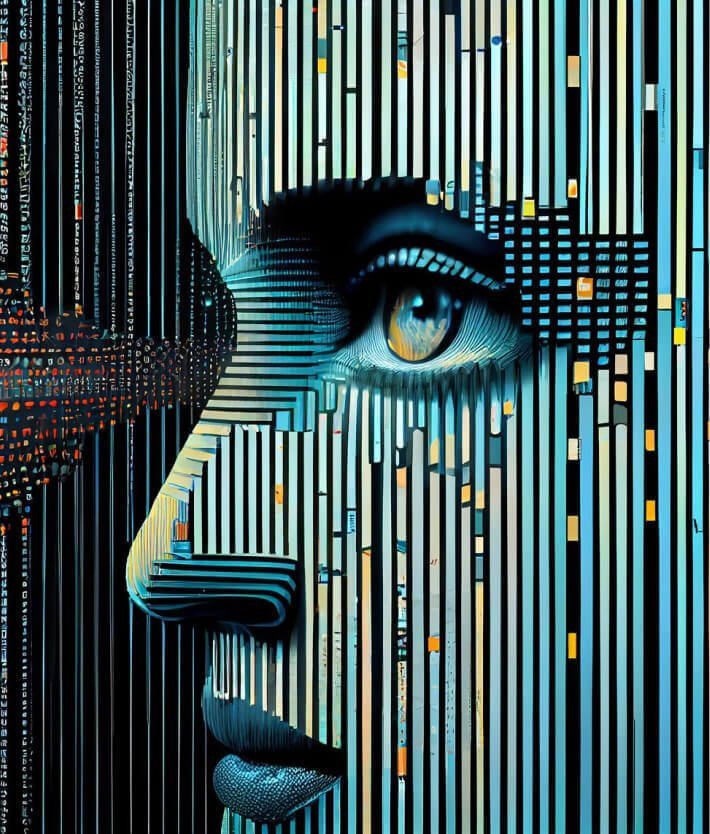
Imagine cozying up with your favourite app, and instead of being blinded by bright white screens, you're greeted with a sleek, calming dark interface. Feels good, right? Dark mode Design isn't just a trend—it's a revolution in UI/UX design, and it's here to stay. Whether you're binge-watching YouTube, chatting on Slack, or scrolling through Instagram, dark mode is making our digital lives easier on the eyes and just a bit cooler. So, why not dive into the dark mode universe and see how it can transform your designs?
Dark mode isn't just a fleeting trend; it's a thoughtful design choice with significant benefits. Firstly, it helps reduce eye strain, especially in lowlight environments, making it a popular choice for nighttime users. For instance, ChatGPT's dark mode provides a comfortable backdrop for those late-night brainstorming sessions, easing eye strain and making long conversations more pleasant.
Additionally, dark mode can save battery life on OLED and AMOLED screens by reducing the power needed to display bright colors. This is particularly noticeable on apps like YouTube and Instagram, where the dark theme not only enhances the visual experience but also helps extend battery life during those extended video watching or ideal for nighttime scrolling.
Psychologically, dark themes can evoke feelings of sophistication and calm, enhancing the user experience. The aesthetic appeal of dark mode is undeniable, providing a sleek, modern look that many users find attractive.
Twitter’s dark mode, known as "Dim" and "Lights Out," has become a favourite among users. The "Dim" mode uses a dark grey background, while "Lights Out" uses a pure black background, ideal for OLED screens. After introducing dark mode, Twitter saw a significant increase in user engagement, particularly during evening hours. Users reported less eye strain and a more enjoyable browsing experience. This success story highlights the importance of offering dark mode as an option and ensuring it's well implemented to enhance user satisfaction.
Creating an effective dark mode design involves several crucial steps. This guide will help you navigate through the essential aspects, ensuring that your dark mode design is not only visually appealing but also highly functional and accessible.
1. Color palettes
Choosing the right color palette is foundational in dark mode UI design. It is not just about aesthetics; it's about creating a user experience that's visually comfortable, accessible, functional, and aligned with the brand's identity. For example, Adobe Creative Cloud's dark mode utilizes a subtle dark gray background with soft white text to ensure readability while allowing vibrant colors in designs to stand out effectively. For finding great color schemes, check out: Adobe Color , Coolors
2. Fonts/Typography
Font/Typography selection plays a crucial role in readability and overall user experience. Fonts are like the clothes of your words: they need to be comfortable and make a good impression. A fun and easy-to-read font is like a pair of your favorite jeans – you can wear it anywhere and it always looks good. If it's too fancy or too small, it's like trying to read in a dark room – not fun! So, when you're picking fonts, think about how they make you feel and whether they're easy to read. It's all about finding the perfect fit for your words! For instance, Kindle's dark mode uses a clean, readable font that mimics the experience of reading a physical book, enhancing comfort during nighttime reading. For font options, explore: Google Fonts
3. Icon
Don't forget about your icons! They may need adjustments to remain visible in dark mode UI design. Tweak line thickness, play with colors, or add a subtle glow to enhance their visibility. Check out Facebook's dark mode – their icons have a touch of white to stand out against the dark background. Additionally, the Facebook Messenger app employs easily visible and distinguishable icons in dark mode.
4. Contrast and readability
Imagine reading a bedtime story with the lights off. It'd be hard to see the words, right? The same goes for your phone in dark mode. If the text and background are too similar, it's like trying to read in the dark! High contrast, like white text on a dark background, is like turning on a nightlight – it makes everything easy to see and saves your eyes from straining. YouTube's dark mode maintains high contrast, making text and icons easily discernible against the dark backdrop. It enhances the video watching experience by reducing glare and providing a more immersive experience, especially in lowlight environments. Another great example of this is the dark mode in Google Maps, providing clear contrast for all map elements and text. Use tools like WebAIM Contrast Checker to test your contrast ratios and ensure readability.
5. Consistency and performance
Optimize performance to ensure smooth transitions between light and dark modes. Minimize flicker and other issues that could cause discomfort. Maintain consistency between your dark mode and light mode elements to provide a unified experience. Provide users with an easy way to switch between light and dark modes. Take inspiration from Slack, as their dark mode maintains the same layout and design elements as the light mode but with a sleek, dark color scheme.
6. Testing
Test your designs on different devices and in various lighting conditions. Gather feedback from users to identify and fix any issues. Use surveys, interviews, or usability testing sessions to understand user needs.
7. Accessibility considerations
Readability: Ensure text is readable by maintaining high contrast and appropriate font size. Twitter’s dark mode, for example, offers two options—"Dim" and "Lights Out"—to cater to different user preferences and accessibility needs. For example, Amazon's Kindle app offers a sepia-toned background and white text in dark mode, ensuring comfortable reading even in low-light conditions.
Color blindness: Use color palettes that are accessible to people with color blindness. Avoid relying solely on color to convey information; use text labels or patterns too.
Visual impairments: Provide options to adjust font size and brightness. Ensure your interface is navigable with screen readers. For accessibility guidelines, refer to: W3C Accessibility Guidelines
8. Visual hierarchy
Use color, size, and placement to create a clear visual hierarchy. Ensure important elements stand out and are easy to find. Ensure that buttons, links, and interactive elements are clear and easy to find. Incorporate visual cues such as hover effects to guide users. For instance, Netflix uses a subtle white outline around buttons in dark mode, making them stand out and ensuring users know where to click.
Minimalistic design
Less is more. Simplified interfaces with clean lines and ample dark space will dominate, providing an uncluttered user experience. In dark mode, this minimalism helps users focus on key content without unnecessary distractions. For example, Spotify’s dark mode uses minimalistic design elements to highlight album art effectively. Its dark mode not only looks cool but also makes album art pop. Imagine discovering new music on Spotify, and the dark mode makes each album cover feel like a masterpiece.
Neumorphism
This trend combines skeuomorphism and flat design, creating soft, extruded shapes that provide a tactile experience. It's particularly effective in dark mode, where subtle shadows and highlights can create depth. To make neumorphism work in dark mode, use dark grays for backgrounds and soft, diffused shadows for depth.
Vibrant accents
Using bright, vibrant colors as accents on dark backgrounds can draw attention to important elements without overwhelming the user. For example, YouTube’s dark mode uses vibrant colors to make video thumbnails pop against the dark background.
Animated micro interactions
Small, subtle animations can enhance the user experience by providing feedback and making interactions feel more natural. In dark mode, these animations can be more noticeable and engaging, providing visual delight without straining the eyes.
Inclusivity and accessibility
Designing with accessibility in mind ensures that your product is usable by everyone. This includes providing options for color blindness, ensuring sufficient contrast, and making text readable. In dark mode, this means carefully choosing color combinations and text sizes to maintain readability and usability for all users.
Dark mode is more than just a trend; it's a thoughtful design choice that can enhance the user experience. By following best practices and considering accessibility, you can create beautiful, functional dark mode designs. So, why not give it a try? Implement dark mode in your next project and let us know how it feels!

Let's collaborate to turn your business challenges into AI-powered success stories.
Get Started